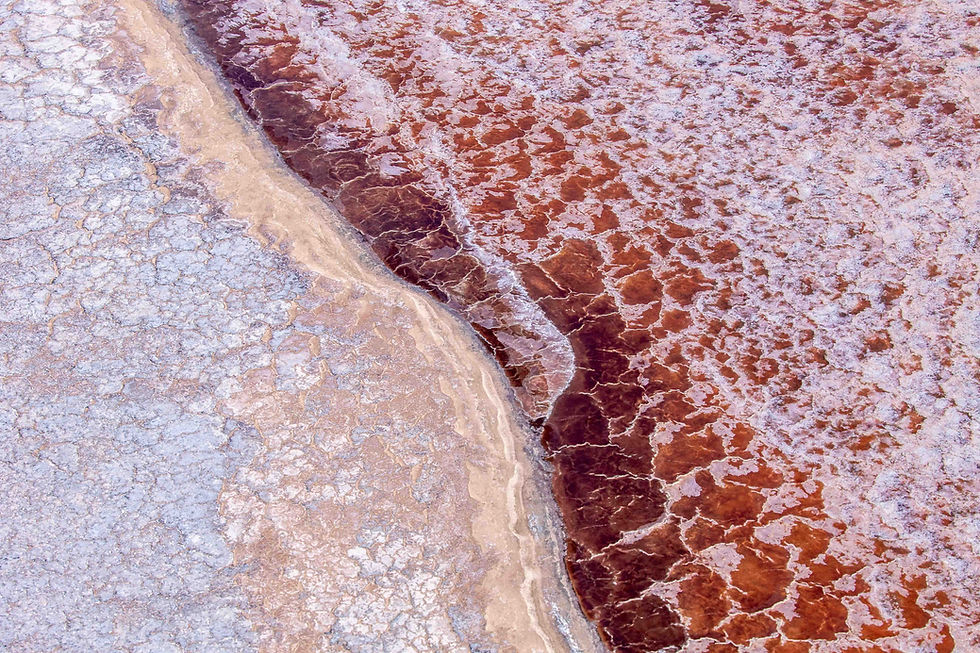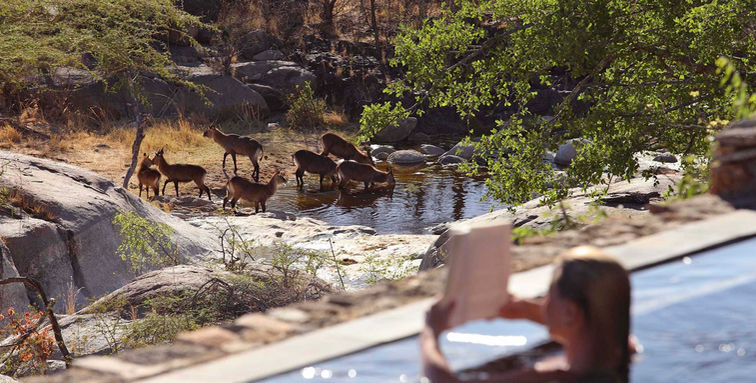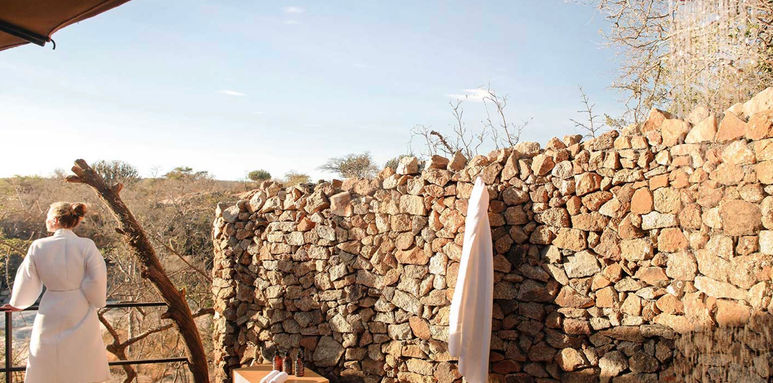TANZANIA BY HELICOPTER
Prepared for Vanessa Lee

ITINERARY
7th - 9th August: Lake Manyara and the Ngorongoro Crater
Meet Ben and the helicopter at Kilimanjaro International Airport.
Your journey begins with a flight over Mount Kilimanjaro before continuing on to Little Chem Chem.
Game drives and guided walks from the lodge.
One morning set off up to the Ngorongoro Crater where you will meet a vehicle to game drive in the spectacular arena. There is an abundance of wildlife within the crater.
Little Chem Chem, 3 nights.
10th - 11th August: Lake Eyasi and Southern Serengeti
After breakfast set off to meet the Hadza tribe, spend the morning out with the tribe as they hunt and gather. Continue on to Mwiba Lodge where you will stay for the next two days.
Fly out to Lake Eyasi to find a beautiful sundowner spot.
Mwiba Lodge, 2 nights.
12th - 14th: The Serengeti and the Northern Rift
After breakfast set off for the most exceptional scenic flight over the northern rift of Tanzania. Flying over the Empakai Crater and the highlands before landing on Ol Doinyo Lengai where you can walk across to peer into the active volcano. Next fly over Lake Natron, a spectacular site with its red algae rich water. Finally fly over the Serengeti into the Sasakwa airstrip. Here a vehicle and guide will be waiting to take you to the lodge. Game drives and guided walks from the lodge.
Ben and the helicopter will depart on the morning of the 13th.
15th: Departure
A coastal charter will arrive at Sasakwa airstrip to take you to Kilimanjaro International airport for your flight home.
End of Safari
7th - 9th August
LAKE MANYARA AND CHEM CHEM CONSERVANCY
Manyara is best known for its tree climbing lions, the soda ash lake that attracts thousands of pink flamingos, one of Tanzania’s biggest elephant population and breathtaking scenery.
The unique lions in the park have the capability to climb trees; being nocturnal animals they spend most of their day resting up in the big fig trees and at sunset they descend when the temperatures are cooler.
MOUNT KILIMANJARO
Mount Kilimanjaro stands at 19,341 feet above sea level, the highest and most famous mountain in Africa. Mount Kili has three peaks, Kibo, Mawenzi and Shira. The peaks are topped with glaciers and often in cloud. A helicopter tour brings a new perspective to the grandeur of its slopes, the magnitude of life it supports and the beauty of its contours.




THE NGORONGORO CRATER
Formed millions of years ago by the collapse of a massive volcano, this UNESCO World Heritage site is the largest intact caldera in the world, with a diameter of about 20 kilometers (12 miles). The crater floor, which covers an area of roughly 260 square kilometers (100 square miles), is home to an incredibly diverse range of wildlife, making it one of the best places on earth for a game drive.
A game drive within the Ngorongoro Crater is an extraordinary experience, offering a unique chance to witness an incredible variety of animals in a relatively small area. The floor of the crater is teeming with wildlife, including the "Big Five" (lions, elephants, buffaloes, leopards, and rhinos), as well as zebras, wildebeests, giraffes, and an array of bird species. The lush green grasslands, freshwater lakes, and sparse forests create a habitat that supports year-round wildlife activity, with the crater’s dense population of animals particularly notable during the dry season.




LITTLE CHEM CHEM
Situated on the eastern shores of Lake Manyara and just a short drive from Tarangire National Park, this luxury lodge is set on a private concession, providing an exclusive and unspoiled wilderness experience.
The lodge is designed to blend seamlessly into its natural surroundings, with six elegantly appointed tented suites that combine traditional safari style with contemporary comfort. Each suite is spacious and beautifully decorated, with expansive canvas walls that allow for sweeping views of the surrounding bush and Lake Manyara. The interiors are designed to offer a sense of relaxed luxury, featuring king-sized beds, stylish furnishings, and open-air bathrooms with outdoor showers. The open-air verandas provide the perfect spot to relax and soak in the serene landscape.
10th - 11th August
SOUTHERN SERENGETI
The endless open plains of the southern Serengeti host the beginning of the life cycle of wildebeest and zebra. Wildebeest feast on the grassland savannah, a nutritionally rich land of clay soil. The area ranges from Acacia woodlands to the short-grass plains that attract the Great Migration.
It’s home to large herds of wildebeest and zebra during calving season. Cheetah and lion patrol and hunt while vultures and hyenas scavenge for feasts.
THE HADZA TRIBE
The Hadza, a small ethnic group of hunter-gatherers, are the earliest known inhabitants of the Yaeda Valley, though no one can say for sure when they
arrived or where they came from originally. They live a life unchanged for more than ten thousand years, hunting baboons, birds, antelope and buffalo with hand-made bows and arrows, in a hot desolate landscape. Linguistic studies show that while their language is superficially similar to the Khoisan language group of the Bushmen and Hottentots, it cannot be placed in any of the recognized major ethno-linguistic groups. Hadzane, is rhythmic and punctuated by clicks, and believed to be the oldest language still spoken.
You will have the opportunity to land and walk with the Hadza, accompanying them whilst they hunt. The focus of a visit to the Yaeda valley is to learn about and from the Hadza by taking natural history walks with them and by visiting their camps. This is a very special experience in this day and age.




MWIBA LODGE
Mwiba Lodge overlooks a rocky gorge on the Arugusinyai River, located within a wildlife reserve adjoining the southern Serengeti.
Limited to just 10 suites, each with a private deck, spectacular views, large soaking tub, outdoor rain shower, personal minibar and grand bed made for dreaming. The main lodge offers airy living spaces, a rejuvenating spa and gym and a curated wine cellar. An expansive pool is set on a rocky outcrop overlooking natural springs below where resident wildlife frequently comes to slake their thirst.
12th - 14th August
THE NORTHERN RIFT
A spectacular scenic flight over the Ngorongoro Conservation Area and the volcanoes that make up the Northern Rift of Tanzania, a totally unique and dramatic area. The volcanic region of northern Tanzania has an incredible diversity of landscapes, rich in Maasai culture and an abundance of wildlife.
LAKE NATRON & OL DOINYO LENGAI




Fly up Lake Manyara to the Ngorongoro Crater and over the highlands. Land at Ol Doinyo Lengai, where we walk across to the active volcano and peer into its bubbling crater. This conical mountain is known at the "Mountain of God' in Maasai. It is the only active volcano on the Eastern Rift. It is the coolest volcano in the world, being the only known volcano to erupt natrocarbonatite (sodium-rich) lave, which is half the temperature of typical glowing basaltic lava. Its lava fountains harden midair, then shatter like glass.
Next we fly to Lake Natron, a primeval-soup like shallow alkaline lake which is high in cynobacteria, an algae that releases a chemical which damages the cells, nervous system and liver of most of the organisms that consume it. These salt loving microorganisms thrive in this alkaline water, creating the rich red colour. The lake is a flamingo paradise as they do not have to contend with any predators and can feed on the algae, as a result 75% of the worlds population of lesser flamingo are born on the shores of Lake Natron.
GRUMETI CONSERVANCY
Fly up Lake Manyara to the Ngorongoro Crater and over the highlands. Land at Ol Doinyo Lengai, where we walk across to the active volcano and peer into its bubbling crater. This conical mountain is known at the "Mountain of God' in Maasai. It is the only active volcano on the Eastern Rift. It is the coolest volcano in the world, being the only known volcano to erupt natrocarbonatite (sodium-rich) lave, which is half the temperature of typical glowing basaltic lava. Its lava fountains harden midair, then shatter like glass.
Next we fly to Lake Natron, a primeval-soup like shallow alkaline lake which is high in cynobacteria, an algae that releases a chemical which damages the cells, nervous system and liver of most of the organisms that consume it. These salt loving microorganisms thrive in this alkaline water, creating the rich red colour. The lake is a flamingo paradise as they do not have to contend with any predators and can feed on the algae, as a result 75% of the worlds population of lesser flamingo are born on the shores of Lake Natron.
SABORA TENTED CAMP
Singita Sabora Tented Camp is a modern reimagining of the classic safari tent, combining traditional, authentic design with sophisticated comforts. The camp is composed of nine elegant and spacious tents, each offering expansive views of the surrounding plains where game roams freely. The tents are designed to be both opulent and discreet, blending seamlessly with the environment.
The interior of each tent is a perfect balance of luxury and style, featuring rich canvas walls, wooden furniture, and plush furnishings. The large king-sized beds are adorned with high-quality linens, providing a restful night’s sleep in the middle of the bush. The tents also come with private, en-suite bathrooms, complete with indulgent outdoor showers and bathtubs, allowing guests to relax in privacy while enjoying the sounds of the African wilderness.

END OF SAFARI
Tropic Air is based in Kenya, and offers a broad range of professional air services using helicopters and fixed wing aircraft, throughout sub-Saharan Africa.
Areas of operation: 16 African countries, covering more than 10 million square kilometers: Kenya, Tanzania, Uganda, Congo, Chad, South Sudan, Somalia, Ethiopia, Rwanda, Madagascar, Mozambique, Zambia, Malawi, Zimbabwe, Botswana and Namibia.



































